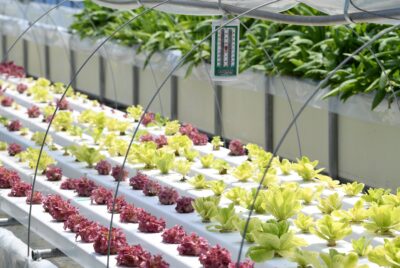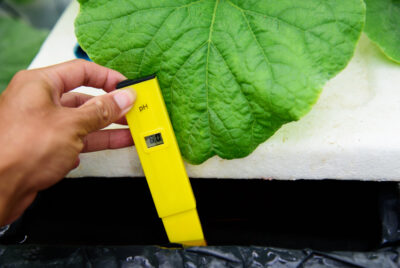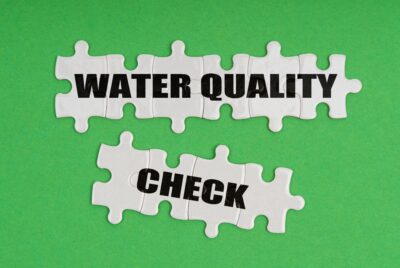Vertical Hydroponic Garden
We may earn a commision from purchases made using our links. Please see our disclosure to learn more.
Vertical Hydroponic Garden: A Brief Overview.
As a passionate indoor gardener and enthusiast, I’ve become quite smitten with the concept of vertical hydroponic gardening. Wondering what makes it so intriguing? Stick around and you’ll soon find the perfect fit.
What is a Vertical Growing System?
So, what’s all the fuss about this type of system, you may wonder? How does a vertical garden system work? Simply put, it is a technique of growing plants up, not out, in water infused with essential hydroponic fertilizer—sans soil. Picture a wall of fresh herbs, flowers, or even vegetables grown in your living space, and you’re on the right track.
Benefits of Vertical Gardening
Why should you consider adopting this gardening approach? Because it offers multiple perks such as space efficiency, better hydroponic fertilizer control, and less physical strain. It’s especially beneficial for city dwellers who are usually space-strapped but still yearn for a touch of green in their lives.
How Does a Vertical Garden Work?
Now that we’ve covered the basics, let’s delve into the mechanics of how this system operates.
The Role of Hydroponics
The crux of the system lies in hydroponics—the art of growing plants without soil. Rather than relying on soil for nutrients, the roots directly absorb hydroponic fertilizer solutions in water, leading to accelerated growth and increased yields. Intriguing, isn’t it?
The Vertical Structure
In a vertical setup, plants are arranged upwards in a tiered system. This lets you maximize vertical space, making it a perfect fit for urban settings where horizontal space is at a premium.
Setting Up Your Vertical Growing System
Convinced to give vertical gardening a go? Here are some key considerations.
Choosing the Right Location
Your garden’s location determines its success. Ensure the space is well-ventilated, has access to light, and maintains a consistent temperature. Bonus points if it’s near a water source!
Selecting the Appropriate Plants
Not all plants are suitable for a living wall. Ideally, opt for plants that don’t require deep rooting or sprawl outwards excessively. Herbs, lettuce, and strawberries are excellent choices.
Choosing the Right Indoor Hydroponic Systems
When selecting a hydroponic system, take into consideration factors such as available space, budget, and commitment. Some popular choices include Nutrient Film Technique (NFT) and Drip systems.
Maintaining Your Indoor Farm
Once set up, maintaining your garden is crucial for healthy plant growth.
Regular Watering and Hydroponic Fertilizer Supply
The absence of soil means your plants rely heavily on water and hydroponic fertilizer solutions. Consistently monitor the pH and hydroponic fertilizer levels, adjusting them as needed. Above all, ensure your plants have an adequate water supply at all times.
Proper Hydroponic Grow Lighting
Even with ample natural light, supplemental lighting is often necessary, especially in indoor settings. LED grow lights are a great choice as they can provide a full spectrum of light for your plants while being energy-efficient. Don’t overlook the correct hydroponic instruments and controllers too.
Pest and Disease Management
While hydroponic systems generally experience fewer pest problems, they are not completely immune to them. Regularly inspect your plants for signs of pests or diseases, taking appropriate measures swiftly to avoid infestations.
The Future of Vertical Hydroponic Gardening
Now that we’ve covered the basics and how-to’s of vertical growing systems, let’s peek into its promising future.
Advances in Technology
In the era of smart homes, hydroponic gardening is not far behind. Advanced systems allow for automated hydroponic fertilizer delivery, lighting adjustments, and even smartphone notifications if the pH balance gets out of whack.
Sustainability and Urban Farming
As urban farming and sustainable living gain traction, vertical gardening provides an excellent solution. Not only does it promote efficient use of space, but it also reduces water consumption by up to 90% compared to traditional farming. Talk about going green in style!
Conclusion
Vertical hydroponic gardening is a game-changer, especially for urban dwellers yearning for a slice of green. It’s efficient, eco-friendly, and with recent technological advancements, becoming increasingly convenient to adopt. Don’t wait any longer! Take action now! Delve into this realm and start reaping the ‘fruits’ of your labor!
FAQ’s
How much does a vertical growing system cost?
The cost varies greatly based on the complexity of your system and the plants you choose. Nevertheless, a basic setup can have a starting cost of approximately $100.
How often do I need to check the hydroponic fertilizer solution in my hydroponic garden?
To maintain optimum plant health, it is advisable to regularly check the hydroponic fertilizer solution at least once a week.
What kind of light is best for a vertical garden?
While natural light is ideal, Full Spectrum LED grow lights are a popular choice for indoor hydroponic systems due to their efficiency and also the full spectrum of light.
Is vertical hydroponic gardening sustainable?
Indeed, it is undeniably an eco-friendly choice. It stands out by efficiently utilizing up to 90% less water than traditional gardening methods.





Comments are closed.